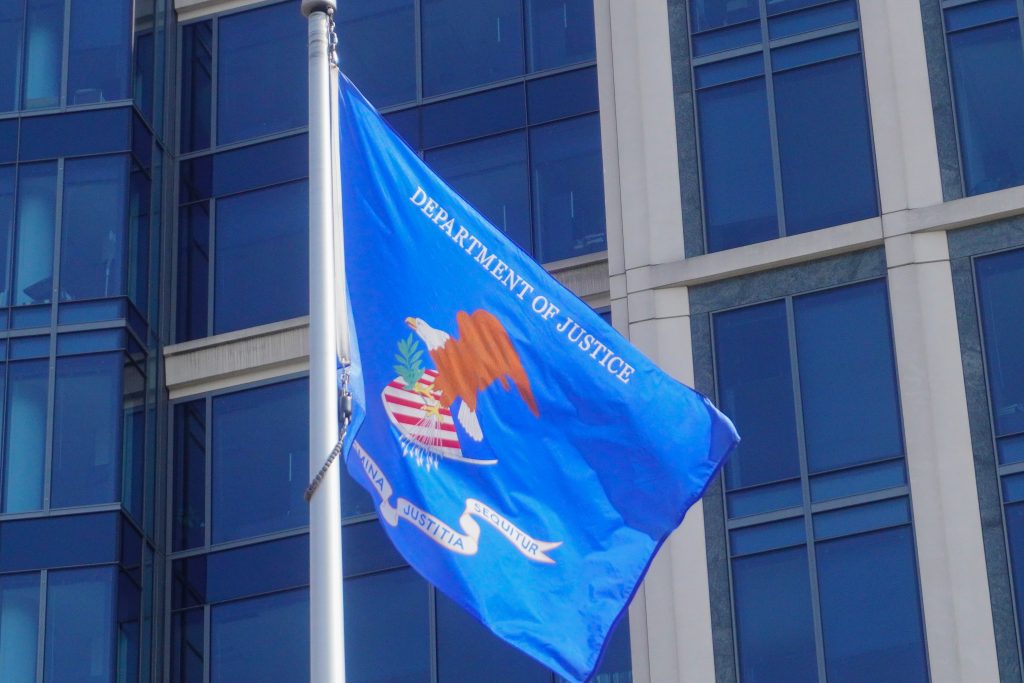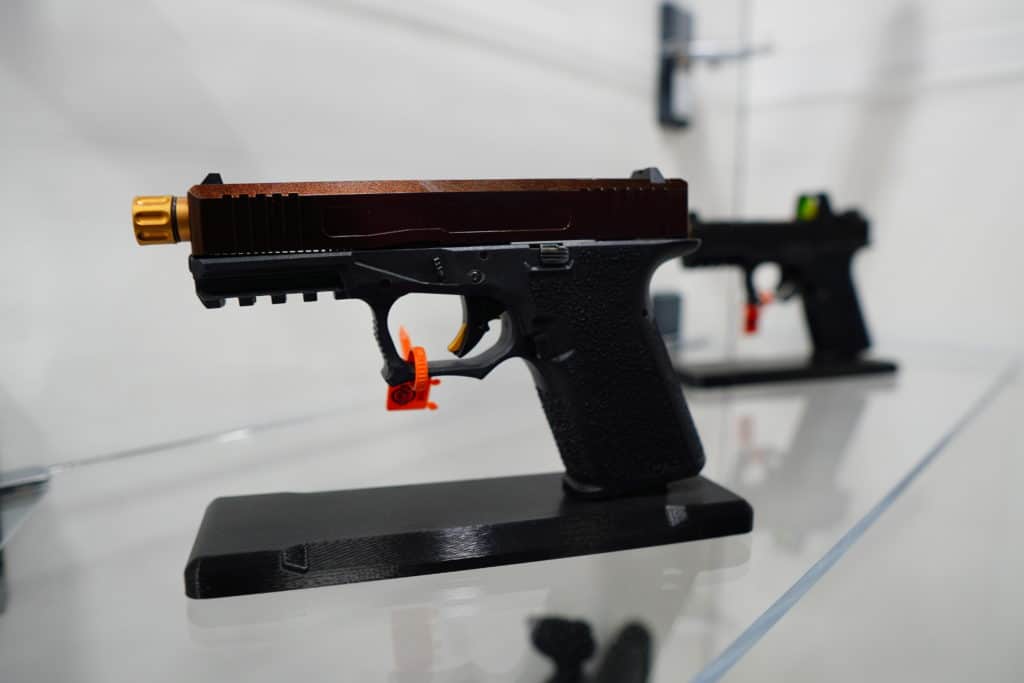The Trump Administration introduced one other newsworthy gun coverage initiative this week.
On Thursday, the Division of Justice stated it had opened a civil rights investigation into the delays and excessive charges related to Los Angeles County’s gun-carry allowing course of. Contributing Author Jake Fogleman takes an in depth have a look at precisely what which means and what might come from the investigation, in addition to potential future ones.
Then I take a deep dive into the Supreme Court docket’s ruling upholding the ATF’s “ghost gun” equipment ban. I do my greatest to discern what precisely it does. Plus, firearms scholar David Kopel joins the podcast to offer his perspective on the choice.

Evaluation: Trump Admin Ramps Up Scrutiny of Native Gun Restrictions [Member Exclusive]By Jake Fogleman
The early days of the second Trump administration have seen just some concrete actions on gun coverage, principally restricted to federal personnel strikes and procedural reforms. Now, it’s firing a shot throughout the bow of states and localities pushing the envelope on Second Modification restrictions.
On Thursday, the Division of Justice (DOJ) introduced a proper investigation into the Los Angeles County Sheriff’s Division and its dealing with of hid handgun license functions. The DOJ stated it was involved that the division has been partaking in “a sample or apply” of subjecting candidates to extreme charges and wait occasions earlier than they will train their proper to bear arms.
“This Division of Justice is not going to stand idly by whereas States and localities infringe on the Second Modification rights of abnormal, law-abiding People,” Lawyer Normal Pam Bondi stated in a press launch launching the probe. “The Second Modification will not be a second-class proper, and below my watch, the Division will actively implement the Second Modification similar to it actively enforces different basic constitutional rights.”
What This Means
The 1994 crime invoice handed by Congress authorizes the Lawyer Normal to launch a civil investigation over police companies for “a sample or apply of conduct…that deprives individuals of rights, privileges, or immunities secured or protected by the Structure or legal guidelines of the USA.”
In accordance with the DOJ, sample or apply investigations usually contain “gathering data instantly from group members,… interviewing police and native officers, gathering data from different legal justice stake holders, observing officer actions by ride-alongs and different means, and reviewing paperwork and particular incidents which can be related to the investigation.”
Following this evidence-gathering part, the investigators will challenge a public report detailing whether or not or not they recognized any conduct violating constitutional or statutory rights. In the event that they do, they may work to return to a negotiated settlement with the investigated division “that includes particular cures and that turns into a federal courtroom order overseen by an impartial monitor.” If the division resists coming to an settlement, the legislation provides the Lawyer Normal the authority to provoke a lawsuit to implement its most popular reforms.
Within the case of investigating the LA County Sheriff’s Division, others have already achieved a few of that legwork. DOJ acknowledged it took inspiration from a 2023 lawsuit from the California Rifle and Pistol Affiliation that accused the division of overseeing software processing occasions that regularly exceed 18 months, although state legislation solely provides jurisdictions 120 days to approve or deny an software. Final August, a federal decide issued a restricted injunction towards the division after discovering that such delays possible violated the Second Modification rights of two particular person plaintiffs within the case.
“The Civil Rights Division has purpose to consider that these two plaintiffs are usually not the one residents of Los Angeles County experiencing equally lengthy delays which can be unduly burdening, or successfully denying, the Second Modification rights of the folks of Los Angeles,” DOJ stated within the press launch.
LA has a historical past of abusing its allowing system below its earlier management, and extra anecdotal proof of different candidates going through related delays has continued to pile up in information experiences and on-line boards.
Nonetheless, whether or not that shall be sufficient to quantity to a proper discovering of a sample or apply of violating Second Modification rights is much less clear. Whereas the Supreme Court docket has particularly warned towards allowing programs “put towards abusive ends” with wait occasions, charges, or different impediments, it hasn’t truly outlined a threshold or take a look at for when these boundaries are crossed (although decrease federal courts are beginning to supply solutions).
In the end, although, the objective of the investigation could also be extra geared towards utilizing the specter of a federal probe to encourage the division to alter its practices. The DOJ assertion hinted at that.
“Lawyer Normal Bondi hopes that states and localities will voluntarily embrace their obligation to guard the Second Modification rights of their residents,” it reads.
Extra to Come
DOJ stated this new investigation could be a part of “a broader assessment” of restrictive firearm legal guidelines nationwide, although it accused California of being “a very egregious offender.”
That would imply related investigations or different interventions into state and native firearms regulatory practices. Ought to it select to take action, it would have loads of potential targets inside the Golden State.
As The Reload has beforehand reported, the Metropolis of San Jose presently prices greater than $1,300 for hid carry candidates. Localities like La Verne, Morgan Hill, and Santa Clara County additionally cost near $1,000 for his or her permits. There are possible others charging related charges. These charges are effectively above what state legislation requires, and are an order of magnitude greater than what many different states cost for permits.
The administration already seems to have its eyes set on jurisdictions exterior of California as effectively.
On Friday, it introduced the same, although much less antagonistic, initiative aimed toward gun-carry allowing practices in Washington, DC—one other jurisdiction infamous for drawing out the applying course of. A brand new govt order from President Trump on “Making the District of Columbia Secure and Stunning.” The order establishes a brand new federal “D.C. Secure and Stunning Activity Drive” that may, amongst different issues, collaborate with native officers “to extend the velocity and decrease the price of processing hid carry license requests within the District of Columbia.”
Bondi additionally pledged to convey these investigations ahead in “some other states or localities that insist on unduly burdening, or successfully denying, the Second Modification rights of their abnormal, law-abiding residents.”
That would attract cities like New York Metropolis, for example. The Massive Apple is a frequent goal of gun homeowners’ ire over its personal accusations of slow-walking permits. Although New York legislation caps allowing timelines to 6 months, the method regularly takes longer than a 12 months or extra, and town is presently going through a number of lawsuits difficult these delays.
The Backside Line
It stays to be seen what is going to finally come from the Trump administration’s new native Second Modification focus. Formal investigations usually transfer slowly, and the Justice Division’s bandwidth is probably going already restricted because of the administration’s flurry of motion on different coverage priorities.
However ought to it bear fruit, both by prompting new consent decrees and even preemptive coverage adjustments by localities afraid of additional scrutiny, it might consequence within the greatest sensible enlargement of gun rights of any Trump Second Modification initiative up to now. In spite of everything, thousands and thousands of individuals reside in areas with probably the most onerous gun-carry allowing regimes–to not point out the numerous different gun restrictions that the DOJ might select to focus on down the road.

Podcast: Firearms Coverage Scholar David Kopel on Fallout from the SCOTUS ‘Ghost Gun’ Ruling [Member Early Access]By Stephen Gutowski
This week, we’re taking an in depth have a look at the Supreme Court docket’s ruling in Bondi v. VanDerStok.
To do this, we’ve the Independence Institute’s David Kopel on the present. Kopel has written extensively on gun coverage and been cited repeatedly on the Supreme Court docket. So, there are few folks higher certified to dissect what the VanDerStok ruling means.
Kopel argued the choice upholding the ATF’s “ghost gun” equipment ban is comparatively slim, however nonetheless possible applies to extra than simply the Polymer80 “purchase construct shoot” kits mentioned at size by the bulk. He additionally defined why the bulk determined the case as a facial problem and why he, together with Justices Thomas and Alito, disagrees with the usage of that normal.
He stated the Trump Administration might have tried to intervene on this case, however didn’t transfer quick sufficient. Nonetheless, he argued that it could possibly nonetheless attempt to undo the rule regardless of the choice. Kopel additionally gave his view on the place the steadiness of the courtroom lies on gun points and whether or not there’s a dependable method to learn what they may do with different pending gun circumstances.
You possibly can hearken to the present in your favourite podcasting app or by clicking right here. Video of the episode can also be accessible on our YouTube channel. An auto-generated transcript is accessible right here. Reload Members get entry on Sunday, as at all times. Everybody else can hear on Monday.
Get a 30-day free trial for a subscription to The Dispatch by clicking right here.
Plus, Contributing Author Jake Fogleman and I discuss Vanderstok. We additionally focus on the monetary troubles hitting the gun-control group March for Our Lives. Lastly, we cowl an outlier federal ruling on New York Metropolis’s stun gun ban earlier than highlighting DOJ’s plans for the ATF and investigation into California’s gun-carry allowing.
Audio right here. Video right here.

Evaluation: What the Supreme Court docket ‘Ghost Gun’ Ruling Does [Member Exclusive]By Stephen Gutowski
The Supreme Court docket has upheld the ATF’s “ghost gun” equipment ban, however its ruling was pretty slim. So, what precisely does it do?
On Wednesday, a 7-2 majority dominated the Biden-era survived what it categorized as a facial problem. It argued there was a minimum of one situation the place the objects the ATF focused match inside the underlying statute: now-defunct Polymer80’s “purchase construct shoot” equipment and its unfinished frames.
“Sure, maybe a half hour of labor is required earlier than anybody can fireplace a shot,” Justice Neil Gorsuch wrote for almost all in Bondi v. VanDerStok. “However whilst offered, the equipment comes with all vital elements, and its meant operate as instrument of fight is apparent. Actually, the equipment’s title says all of it: ‘Purchase Construct Shoot.’”
Exterior of that, although, the bulk declined to offer additional particular steerage. It supplied up a myriad of caveats in regards to the potential limits of its ruling, however no shiny strains on how far the ATF might attain below the rule it upheld.
“Admittedly, our reasoning right here has its limits. Simply because some kits, like Polymer80’s, qualify as ‘weapons’ that ‘can readily be transformed’ into working firearms doesn’t imply all do,” Gorsuch wrote of the “purchase construct shoot” kits. “Consider the issue of the heap: Begin with a heap of sand and start eradicating grains; sooner or later, a heap now not exists. That downside attends many artifact nouns. Even when used to seize unfinished merchandise, artifact nouns usually attain solely up to now. It could be extravagant to talk of a novel when the writer has dashed off just a few strains. Few would name a pile of unfinished logs a desk. Subsection (A) could current the same downside.”
“Weapon components kits differ extensively,” he continued. “Not all come as full because the ‘Purchase Construct Shoot’ equipment. Some, too, could require extra time, experience, or specialised instruments to complete. And sooner or later a equipment could also be so incomplete or cumbersome to assemble that it could possibly now not pretty be described as a ‘weapon’ able to ‘learn[y] . . . conver[sion]’ right into a working firearm. Whereas we acknowledge the issue, this case doesn’t require us to untangle precisely how far subsection (A) reaches.”
He echoed the identical fundamental level for Polymer80’s unfinished frames.
“Right here, once more, our reasoning has its limits. In saying {that a} product like Polymer80’s qualifies as a ‘body,’ we don’t recommend that the GCA reaches, and ATF could regulate, any mixture of components prone of conversion right into a body or receiver with adequate time, instruments, and experience. Just like the time period “weapon,” the artifact nouns “body” and “receiver” have their bounds. Some merchandise could also be so removed from a completed body or receiver that they can’t pretty be described utilizing these phrases. However this case requires us to discover none of that.”
Writing in concurrences and dissents, most of the justices appeared to disagree on what precisely the implications of the ruling ought to be.
One of the distinguished disagreements was between Justices Samuel Alito and Sonia Sotomayor. They went backwards and forwards over what exactly the Court docket needed to say about what the ATF might regulate.
“The second level I handle is the suggestion that the Act permits ATF to manage solely ‘all-but-assembled’ weapon components kits and frames ‘as near completion as attainable,’” Sotomayor wrote, apparently alluding to Alito. “The Court docket’s opinion speaks for itself on that time and others. I encourage readers to go to the supply, relatively than depend on dissents, to grasp what the Court docket holds. It’s the Court docket’s ruling, not the one set forth by the dissents, that binds the decrease courts.”
Alito responded in type.
“Though Justice Sotomayor clearly needs that the Court docket had gone additional, all that the Court docket has truly held is that the ATF rule will not be facially invalid as a result of a minimum of some functions of the rule are according to the statute,” he wrote. “And the 2 examples that the Court docket cites are (1) a equipment that accommodates all of the components wanted to make a semiautomatic pistol and that may be assembled in 21 minutes and (2) a body that may be made useful just by clipping off two plastic tabs and drilling a number of holes, ante, at 17–18, 21. The Court docket has not held that some other kits or presently non-functional receivers are coated.”
Then there was the disagreement over whether or not the bulk’s reasoning might result in AR-15 homeowners being topic to the Nationwide Firearms Act (NFA). That’s as a result of Justice Clarence Thomas and the plaintiffs argued semi-automatic AR lowers may very well be thought of as simply convertible to fully-automatic lowers as these Polymer80 frames are to completed frames. The bulk argued the federal government had little interest in attempting to make that connection, and its opinion doesn’t justify it both.
“The federal government represents that AR–15 receivers don’t ‘qualify because the receiver of a machinegun.’ Nor, the federal government emphasizes, has ATF ever ‘advised in any other case,’” Gorsuch wrote. “A lot the identical might be stated of our reasoning right this moment. As we’ve pressured, a statute’s textual content and context are important to figuring out whether or not (and to what extent) Congress used an artifact noun to achieve unfinished objects. And, doubtless, the NFA and the GCA are completely different statutes handed at completely different occasions to deal with completely different issues utilizing completely different language.”
So, the ruling provides the ATF a inexperienced mild to go after sellers of kits akin to the “purchase construct shoot” one. Nevertheless it opens up a number of potential as utilized challenges, too. The bulk didn’t appear to thoughts that, although.
“The plaintiffs argue solely that § 478.11’s provision addressing weapon components kits is facially inconsistent with the statute. The Fifth Circuit adopted the identical view after coming to the unqualified conclusion that weapon components kits can by no means fulfill the statute’s two assessments,” Gorsuch wrote. “To resolve this case, it is sufficient to say these assessments are mistaken. As a result of a minimum of some weapon components kits fulfill each of subsection (A) ‘s assessments, §478.11 will not be facially invalid.”
That’s it for now.
I’ll discuss to you all once more quickly.
Go Birds,Stephen GutowskiFounderThe Reload


![Analysis: The Changes Gun-Control Groups Want in DOJ’s Rights Restoration Plan [Member Exclusive]](https://i2.wp.com/cdn.thereload.com/app/uploads/2025/04/DSC08202-scaled.jpg?w=350&resize=350,250&ssl=1)



![Analysis: How DOJ Justifies the NFA Despite its New $0 Tax [Member Exclusive]](https://i3.wp.com/cdn.thereload.com/app/uploads/2025/04/DSC08030-scaled.jpg?w=350&resize=350,250&ssl=1)


![Analysis: Trump Admin Ramps Up Scrutiny of Local Gun Restrictions [Member Exclusive]](https://i2.wp.com/cdn.thereload.com/app/uploads/2021/07/DSC01544-scaled.jpg?w=75&resize=75,75&ssl=1)











